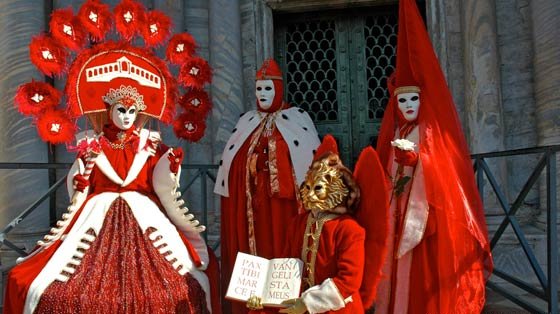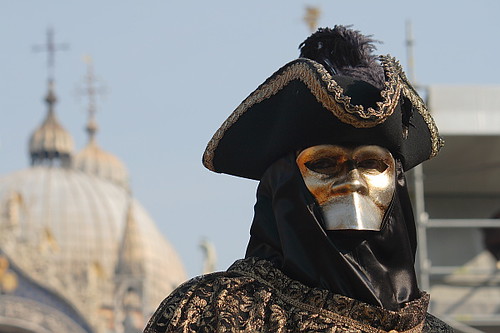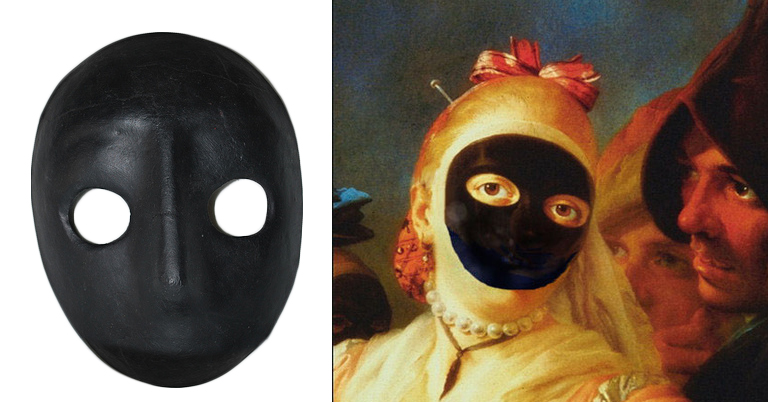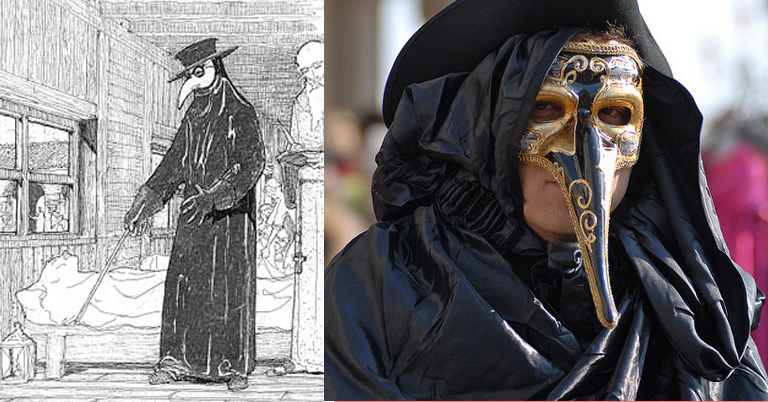Your Guide To Venetian Carnival Masks

by Noam DePlume
Surely, anybody whos familiar with Mardi Gras or Carnival celebrations will recognize the colorful, uniquely shaped and often intricately decorated masks as an integral part of the celebration. But few know the rich history and tradition that accompanies these masks, or the often bizarre social assumptions that they represent. With that in mind, allow me to bring you up to speed.
History: Why We Hide

Though the precise origin of the mask-wearing tradition cant be known for certain, the prevailing theory goes something like this: beginning in the Italian Renaissance, Venice was an extremely wealthy and powerful merchant empire. Its position on the Mediterranean sea opened it up to a myriad of trading opportunities across Europe, North Africa and Asia Minor, and its powerful navy allowed it to exert the military force necessary to defend its vast wealth. In a city-state so prosperous, its a small wonder that Venetian society was class-obsessed and rigidly stratified. Ones individual standing was immensely important for the perception of his or her entire family, and so naturally the pressure to act in accordance with the social morays governing ones social standing was immense and stifling. The Venetians, the theory goes, adopted the practice of wearing masks and other disguises during the Carnival season as a way of suspending the rigid social order. Under the cloak of anonymity, the citizens of Venice could loosen their inhibitions without fear of reprisal. Masks gained so much popularity that the mascherari (mask makers) became a venerated guild in Venetian society. However, as word of the famed Venetian Carnival spread, more and more outsiders flocked to the city every year to take part in the festivities. The Carnival celebrations became increasingly chaotic and debaucherous as the years progressed until their decline in the 18th Century. Today, the image of the Venetian Carnival mask conjures up images not only of mystery and excitement, but also often of danger and intrigue.
The Bauta Mask

A full-face mask with no mouth and a strong, protruding chin, the Bauta mask was designed to conceal the entire face while still allowing the wearer to eat, drink and speak comfortably without removing it, thus preserving anonymity. The Bauta was typically part of a larger costume which included a tricorn hat and long veil or cape called a Tabarro that obscured the subjects entire identity. Worn by men or women, rich or poor alike, the Bauta mask is perhaps the most emblematic of the suspension of traditional social hierarchies during Carnival. Interestingly, by the 18th Century, the Bauta disguise had becomes so ubiquitous in Venetian culture that the government of Venice enacted strict laws governing who could don the Bauta and under what circumstancesit became a right reserved for only citizens, it was required garb for political decision-making meetings where anonymity was preferred to ensure fair decision-making, and wearers of the Bauta were never permitted to be armed.
The Columbina Mask

By contrast, the Columbina mask was an option for those less concerned with preserving anonymity. A half-face mask often held to ones face by means of an attached stick, the Columbina allowed the wearer to reveal their identity at will. This mask supposedly originated when a vain and beautiful Venetian actress, playing the part of the columbina (a servant girl) in Commedia dellarte, insisted on being given a mask that didnt entirely obscure her lovely visage.
The Moretta Mask

Perhaps the strangest and most mysterious mask of them all, the Moretta mask experienced a brief surge of popularity before disappearing almost entirely by 1760. A full-face mask like the Bauta, the Moretta mask (also sometimes called the Servetta Muta, or mute maidservant) had no straps or dowels to secure it to ones face. Instead, the Moretta mask was kept in place by means of a button sewn onto the inside that the wearer would clamp between their teeth, rendering them mute. Traditionally worn only by women, the Moretta encouraged the Renaissance ideal of feminine beauty by accentuating the delicate curves of the face, and by obliging the wearer to communicate via body language instead of by speaking. Ironically, this mute mask speaks volumes about the eras understanding of a womans place in society.
The Medico Della Peste Mask

Certainly one of the most recognizable styles of Venetian mask, the Medico Della Peste mask has a strange and macabre history. Literally meaning The Plague Doctor, this beaked mask was fashioned after the disturbingly birdlike garb of the 17th Century physician. Originally popularized by doctor Charles de Lorme to combat the Bubonic Plague, the eyes of this mask were outfitted with crystal lenses to prevent exposure to sick victims, and the long beak was stuffed with various herbs and remedies believed to keep the sickness at bay. Plague doctors appeared as ominous spectres as they strolled through plague-stricken streets, completely hidden under monstrous masks and black full-body cloaks. The Venetian Carnival mask, ideally suited to maintain anonymity while still allowing comfortable access to ones mouth, must also have been a sobering memento mori in the midst of such gaiety.
The Volto Mask

The simplest and most popular mask at the time, the Volto mask has also come to be most closely associated with Carnival and other masquerades. It is a rounded full-face mask that can be worn in plain white (sometimes called the larva or ghost mask) or lavishly decorated. The Volto mask was so common among revelers at Carnival that it was sometimes referred to as the citizen mask.
Article by Private Island Party 2013. privateislandparty.com





0 Comments